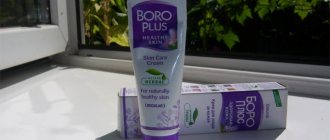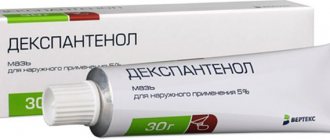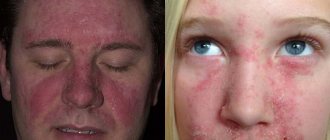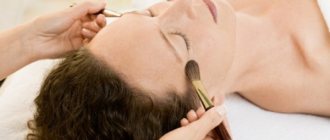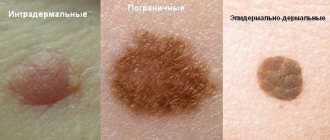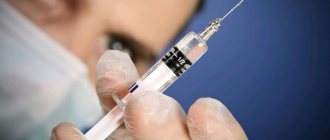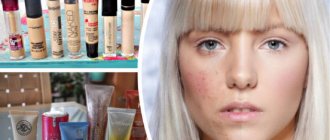- Composition and release form
- pharmachologic effect
- Indications
- Does Skin Cap contain hormones?
- Contraindications
- Use during pregnancy
- Side effects
- Precautionary measures
- Treatment of children
- Price
- Reviews
Psoriasis is one of the most common dermatological diseases. According to statistics, it affects from 1 to 3% of the world's population. The mechanism of development of the pathology has not been sufficiently studied. However, there is an opinion that the disease is a common inflammatory process that occurs under specific conditions determined by genetic characteristics. The presence of inflammation turns on the body's powerful defense mechanisms. In psoriasis, these mechanisms get out of control and lead to the death of surrounding tissue. As a result, the reactions of inflammation, immune response, and neuroendocrine regulation developed in the process of evolution acquire a pathogenic character.
Psoriasis leads to the fact that the protective inflammatory reaction turns into its own antipode: it initiates the psoriatic process. The skin reflects disturbances in the mechanisms of inflammation, microcirculation, antibacterial protection, proliferation, immune response, differentiation and programmed cell death, which underlie functional disorders in the skin and damage to internal organs. The main problem of psoriasis is a decrease in the intensity of free radical oxidation. Therefore, normalizing its level is the main point in the treatment of dermatosis. To stimulate lipid peroxidation, many medications, physiotherapeutic methods, special massage, etc. are used. A good addition to them is the use of effective external treatments. These include products from the Skin Cap series.
Composition and release form
The products are available in three forms: spray, cream and shampoo.
The aerosol is an oily solution, the color of which can range from white with a slight yellowish tint to yellow. Has a specific smell.
Cream and shampoo are white.
The active substance in all three products is zinc pyrithione in activated form.
Auxiliary components of the spray for psoriasis Skin cap are:
- isopropyl myristate;
- polysorbate;
- trolamine;
- propellants;
- ethanol;
- water.
The cream contains the following ingredients:
- glycerol monostearate and distearate;
- capryl caprylate;
- isopropyl;
- tegosoft E20;
- isopropyl palmitate;
- methyldextrose polyglyceryl distearate;
- glycerol;
- butylated hydroxytoluene;
- propyl parahydroxybenzoate;
- stearyl alcohol;
- sucrose and fatty acids of coconut oil;
- ethanol;
- cyclomethicone;
- flavorings.
The shampoo contains:
- Tego Perley S-96;
- coconut oil fatty acid propyl betainamide;
- Tego sulfonate 2427;
- sodium lauryl sulfate;
- copolymer of macrogol, dimethicone and propylene glycol;
- flavoring (geraniol, phenylethanol, citronellol, terpineol).
Skin-Cap - cream composition
The drug in question has a light, non-greasy texture, close to an emulsion, white in color, with a recognizable characteristic odor. It is packaged in different ways: in laminated foil sachets of 15 g, in plastic tubes of 15 g and 50 g. Information about the chemical composition of Skin-Cap cream is contained in the instructions for use attached to the medicine.
Skin-Cap cream - a hormonal drug or not?
Skin-Cap is a medicine around which there was a lot of controversy some time ago. Thus, due to its high effectiveness, comparable to the effect of strong hormonal agents, there was a suspicion that the manufacturer was hiding the full composition of the cream by introducing a corticosteroid component into it. An analysis of another drug from the Skin-Cap line - an aerosol - carried out by the American Agency for Supervision of the Quality of Medicines showed the presence of peaks in the resulting chromatograms, which were identified as hormonal substances.
However, the method used, which was available at that time, was far from perfect and could show false positive results. In 2020, a number of independent laboratories from different countries conducted studies using the latest technologies, showing the absence of hormones in Skin-Cap. Today, answering the question of whether Skin-Cap cream is hormonal or not, we can firmly say that it does not contain steroids. Confirmation is provided by laboratory test reports that are freely available on the drug manufacturer’s website.
The active ingredient of Skin-Cap cream is the compound zinc pyrithione, and the zinc in it is combined with oxygen and sulfur, and the molecule is activated in a special way, which is a secret development of the manufacturing company. Thanks to this, zinc pyrithione is highly stable, provides the highest efficiency, exhibiting the following properties:
- anti-inflammatory;
- antibacterial (against streptococci, staphylococci, Escherichia coli, Pseudomonas aeruginosa, Proteus and other microorganisms);
- fungicidal (to the highest degree against Pityrosporum ovale, Pityrosporum orbiculare);
- antipruritic;
- regenerative.
The cream contains the following additional ingredients:
- capryl caprylate;
- glyceryl monostearate;
- glyceryl distearate;
- isopropyl palmitate;
- glycerol;
- butylated hydroxytoluene;
- sucrose and coconut oil fatty acid esters;
- methyldestrose and macrogol-20 ester;
- methyldextrose polyglyceryl distearate;
- stearyl alcohol;
- propyl parahydroxybenzoate;
- ethanol;
- cyclomethicone;
- water;
- flavoring
Skin-Cap: cream or aerosol – which is better?
The product from the Skin-Cap line in aerosol form is a yellowish-white oily solution placed in 35 ml and 70 ml spray bottles. Both the aerosol and Skin-Cap skin cream contain the same amount of active ingredient - 0.2% zinc pyrithione. The difference between these forms lies in the list of additional components, which in the aerosol is represented by the following substances: isopropyl myristate, polysorbate-80, ethanol, trolamine, water, isobutane, propane.
This composition causes the drying effect of the aerosol, while the cream, due to the content of coconut oil esters, can have an additional softening and moisturizing effect. In view of this, it is better to use Skin-Cap aerosol in case of weeping, which is often characteristic of the acute stages of skin lesions, and cream - in case of increased dryness and peeling of tissues. In addition, the aerosol is convenient to use when it is necessary to treat the scalp.
pharmachologic effect
Skin cap is used to treat psoriasis and a number of other dermatoses. The active component, zinc pyrithione, exhibits antimicrobial and antifungal activity. It has a bacteriostatic and fungistatic effect, i.e. it inhibits the proliferation of bacteria and fungi. The mechanism of action of zinc pyrithione is to reduce the energy reserves of the cell (ATP level), resulting in a sharp change in charge on its membrane (depolarization). As a result, pathogenic bacteria and fungi die, but the cell itself is not damaged. The big advantage of zinc pyrithione is that the substance not only eliminates symptoms, but also acts on the very cause of inflammatory and infectious processes (bacteria, fungi, viruses).
The product is active against a number of pathogenic microorganisms. Maximum activity is manifested by fungi of the Pityrosporum group, which are associated with the occurrence and maintenance of inflammatory phenomena and cause accelerated division of epidermal cells (hyperproliferation) in psoriasis, seborrhea, and other dermatoses.
The active ingredient Skin cap suppresses the proliferation of skin cells that are in the stage of active division. However, it does not have a similar cytostatic effect on normally dividing cells.
The drug also contains methyl ethyl sulfate, a surface-active ingredient that increases the permeability of the skin and ensures rapid absorption of the active ingredient and its achievement of the deep layers of the epidermis, thereby increasing its effectiveness in psoriasis.
According to experts, Skin Cap cream also exhibits hydrating activity.
Pharmacokinetics
External use of products with activated zinc pyrithione leads to its retention (deposition) in the layers of the epidermis and the superficial layer of the dermis. The process of systemic absorption is slow. The substance is found in the blood in trace amounts.
Action of the cream
The active components of the drug are concentrated in the epidermis and upper layers of the dermis. The accumulative ability of Skin-cap cream allows the active ingredients to be localized as much as possible in problem areas. Absorbed quickly, excreted slowly. Practically does not enter the bloodstream. In laboratory studies, only residual products were detected in the blood plasma. In this regard, the cream does not have a systemic effect, does not affect the functioning of internal organs, and does not cause side effects.
Residual metabolism occurs in the liver and is excreted through the kidneys and intestines. With long-term use it is not addictive, there is no withdrawal syndrome. Without a doctor's recommendation, it is allowed to use no more than 14 days.
Indications
Skin cap in the form of an aerosol, cream and shampoo is recommended for use as an effective remedy for psoriasis and seborrheic dermatitis. The drugs can be used in the treatment of adults and children starting from the age of one year.
Spray and cream are also used for atopic dermatitis, neurodermatitis, and eczema.
The cream can be prescribed for diseases accompanied by dry skin.
The shampoo is suitable for use for the following disorders and diseases:
- itching of the scalp;
- dandruff;
- dry and oily seborrhea;
- atopic dermatitis with damage to the scalp.
Pharmacological group
Activated zinc pyrithione has anti-inflammatory, antibacterial and antifungal activity.
Antifungal activity is especially pronounced against Pityrosporum ovale and Pityrosporum orbiculare, which support inflammation and excessive flaking in dandruff, seborrhea, psoriasis and other skin diseases. Zinc pyrithione reduces the intracellular level of ATP, promotes depolarization of cell membranes and the death of fungi and bacteria.
| Category ICD-10 | Synonyms of diseases according to ICD-10 |
| L20 Atopic dermatitis | Allergic skin diseases |
| Allergic skin diseases of non-infectious etiology | |
| Allergic skin diseases of non-microbial etiology | |
| Allergic skin diseases | |
| Allergic skin lesions | |
| Allergic manifestations on the skin | |
| Allergic dermatitis | |
| Allergic dermatosis | |
| Allergic diathesis | |
| Allergic pruritic dermatosis | |
| Allergic skin disease | |
| Allergic skin irritation | |
| Allergic dermatitis | |
| Atopic dermatitis | |
| Allergic dermatosis | |
| Exudative diathesis | |
| Itchy atopic eczema | |
| Pruritic allergic dermatosis | |
| Skin allergic disease | |
| Skin allergic reaction to drugs and chemicals | |
| Skin reaction to medications | |
| Skin allergic disease | |
| Acute eczema | |
| Common neurodermatitis | |
| Chronic atopic dermatitis | |
| Exudative diathesis | |
| L20.8 Other atopic dermatitis | Allergic eczema |
| Atopic eczema | |
| Dermatosis of neurogenic origin | |
| Childhood eczema | |
| Diffuse neurodermatitis | |
| Constitutional neurodermatitis | |
| Neurodermatitis | |
| Neurodermatoses | |
| Neurodermatitis | |
| Neurodermatitis diffuse | |
| Neurodermatitis limited | |
| Neurodermatitis | |
| Limited neurodermatitis | |
| Chronic neurodermatitis | |
| L21 Seborrheic dermatitis | Seborrheic dermatitis |
| Increased sebum secretion | |
| Seborrheic eczema | |
| Seborrheic dermatitis of the scalp | |
| Seborrheic pyodermatitis | |
| Seborrhea | |
| Seborrheic eczema | |
| L21.0 Seborrhea of the head | Itching of the scalp |
| Dandruff | |
| Increased sebum secretion | |
| Seborrhea of the scalp | |
| Seborrhea of the scalp | |
| Seborrhea oily | |
| L29.9 Itching, unspecified | Severe itching |
| Itching of the scalp | |
| Itchy eczema | |
| Skin itching due to venous insufficiency | |
| Prurith | |
| L30.9 Dermatitis, unspecified | Allergic dermatoses complicated by secondary bacterial infection |
| Anal eczema | |
| Bacterial diaper rash | |
| Varicose eczema | |
| Venous dermatitis | |
| Skin inflammation | |
| Inflammation of the skin upon contact with plants | |
| Inflammatory skin disease | |
| Inflammatory skin diseases | |
| Inflammatory skin diseases | |
| Inflammatory skin reactions | |
| Inflammatory processes of the skin | |
| Hypostatic dermatitis | |
| Fungal eczema | |
| Fungal dermatoses | |
| Dermatitis | |
| Congestive dermatitis | |
| Dermatitis and eczema in the anal area | |
| Acute contact dermatitis | |
| Perianal dermatitis | |
| Dermatosis | |
| Dermatosis of the scalp | |
| Dermatosis psoriasiform | |
| Dermatosis with persistent itching | |
| Dermatoses | |
| Itchy dermatoses | |
| Other pruritic dermatoses | |
| Significant eczematous manifestations | |
| Itching with dermatoses | |
| Itchy eczema | |
| Pruritic dermatoses | |
| Pruritic dermatitis | |
| Pruritic dermatosis | |
| True eczema | |
| Skin reaction to insect bites | |
| Skin itching due to dermatosis | |
| Constitutional eczema | |
| Weeping eczema | |
| Weeping inflammatory skin disease | |
| Weeping infectious-inflammatory skin disease | |
| Non-allergic dermatitis | |
| Nummular eczema | |
| Limited pruritic dermatitis | |
| Acute contact eczema | |
| Acute inflammatory skin disease | |
| Acute dermatosis | |
| Acute severe dermatosis | |
| Perianal dermatitis | |
| Superficial dermatosis | |
| Subacute contact eczema | |
| Simple dermatitis | |
| Occupational dermatitis | |
| Psychogenic dermatosis | |
| Hydatidiform dermatitis of newborns | |
| Pustular eruptions | |
| Irritation and redness of the skin | |
| Weak eczema | |
| Dry atrophic eczema | |
| Dry eczema | |
| Toxic dermatitis | |
| Eczema-like dermatitis of the ear | |
| Chronic eczema | |
| Chronic dermatoses | |
| Chronic dermatosis | |
| Chronic widespread dermatosis | |
| Scaly papular dermatoses | |
| Eczema | |
| Eczema of the anal area | |
| Eczema of the hands | |
| Contact eczema | |
| Eczema lichenified | |
| Eczema nummular | |
| Acute eczema | |
| Acute contact eczema | |
| Subacute eczema | |
| Eczematous dermatitis | |
| Eczema-like rashes | |
| Ekeema exogenous | |
| Endogenous eczema | |
| Gluteal dermatitis | |
| L40 Psoriasis | Generalized form of psoriasis |
| Generalized psoriasis | |
| Hyperkeratosis in psoriasis | |
| Dermatosis psoriasiform | |
| Isolated psoriatic plaque | |
| Disabling psoriasis | |
| Inverse psoriasis | |
| Koebner phenomenon | |
| Common psoriasis | |
| Psoriasis of the scalp | |
| Psoriasis of the scalp | |
| Psoriasis complicated by erythroderma | |
| Genital psoriasis | |
| Psoriasis affecting the scalp of the skin | |
| Psoriasis with eczematization | |
| Eczema-like psoriasis | |
| Psoriasiform dermatitis | |
| Psoriatic erythroderma | |
| Refractory psoriasis | |
| Chronic psoriasis | |
| Chronic psoriasis of the scalp | |
| Chronic psoriasis with diffuse plaques | |
| Squamosal lichen | |
| Exfoliative psoriasis | |
| Erythrodermic psoriasis | |
| R23.8.0* Dry skin | Dry skin over large areas of the skin |
| Dry skin when the integrity of its integument is violated | |
| Dry skin | |
| Peeling skin |
DETAILS: Prestance price in Moscow from 582 rubles, buy Prestance, reviews and instructions for use
Does Skin Cap contain hormones?
Many sources claim that the products in this series are not hormonal. Manufacturers also insist on this. However, these drugs are prohibited for use in European countries and the USA. The website of the US Federal Department even contains a special warning about the dangers of treating psoriasis and other diseases with Skin Cap drugs. The fact is that they contain a powerful hormonal component - clobetasol. According to experts, the presence of a hormone in an anti-inflammatory drug is not a violation, but the manufacturer must certainly warn about this and indicate the dosage of the hormonal component: this will allow the doctor to prescribe a safe individual treatment regimen to patients. As for Skin Cap, the hormone is not listed in its composition, but laboratory tests made it possible to detect it.
Clobetasol is a glucocorticosteroid agent that has anti-inflammatory, antipruritic, and antiallergic effects. It is used for all forms of psoriasis, with the exception of widespread plaque and pustular.
The mechanism of action of the corticosteroid is due to the induction of the formation of lipocortin proteins, which inhibit the activity of phospholipase A2. Clobetasol also inhibits the synthesis of arachidonic acid and its metabolic products - leukotrienes, prostaglandins. Helps eliminate hyperemia, swelling, itching in the treated area. Local application may result in the substance entering the systemic circulation. The likelihood of this especially increases when treating large areas of the skin.
Contraindications to the use of Skin-Cap cream
The pharmacological company states that there is no contraindication for use unless a person has an individual intolerance to the components of the product.
Another company conducted research and discovered the hormonal component clobetasol in the cream, which is contraindicated for use by pregnant women, breastfeeding women, and children under six years of age.
Skin-Cap is prohibited for sale abroad; in the Russian Federation there are no restrictions on use yet.
Side effects
The official instructions provided by the manufacturing company contain a warning about the possible occurrence of negative effects of the product after its use, manifested by:
- allergic rash, redness, swelling;
- burning sensation.
Note! It is better to wash off the cream immediately and not apply it yet. Carry out a susceptibility test, apply a thin layer of cream to the crook of your elbow, wait half an hour, if redness or other obvious signs do not appear, then the cream can be used.
Also, long-term use of the cream, longer than the period specified in the instructions, may cause side effects:
- acne;
- itching;
- hypertrichosis;
- pigmentation;
- atrophy;
- pustular psoriasis;
- damage to the mucous membrane by ulcers;
- gastritis;
- jumping pressure;
- loss of sensation in the limbs.
Good to know! There may also be Cushing's syndrome in adults and children, if the drug is used longer than prescribed, due to the content of clobetasol in the drug.
How to use
Aerosol Skin Cap is shaken well and sprayed onto areas affected by psoriasis, held vertically at a distance of 15 to 17 cm. Use 2 or 3 times a day. The course of treatment is continued until the desired result is achieved. According to reviews, a lasting effect occurs when treatment is continued for another 7 days after the disappearance of clinical manifestations of the disease. When treating the scalp, use the included attachment. The average course duration is 1-1.5 months. If necessary, it can be repeated after an interval (1 month or more).
The cream is applied in a very thin layer to the areas where plaques are located twice a day. Duration of treatment is up to 1.5 months.
Apply the shampoo in the required amount to damp hair, give a light massage to the scalp, rinse, apply the Skin cap again and leave on the hair for about 5 minutes. Rinse thoroughly with plenty of water. Shake the bottle vigorously before use. According to reviews, for psoriasis the effect appears after 14 days of using the shampoo. The course duration is on average 5 weeks. The frequency of use is 2 or 3 times a week; during the period of remission, treatment can be continued to prevent relapses. In this case, shampoo is used 1 or 2 times a week. The product does not affect the condition of the hair or its color.
Difference in available release forms
The Tsinocap product line is limited to two products - aerosol and cream, while Skin Cap offers two more forms of release - shower gel and shampoo, which is what distinguishes it from the domestic product.
The shampoo is intended for the treatment of itching, dandruff, seborrheic and atopic dermatitis of the scalp. There is only one active ingredient in the entire line of Skin Cap products - activated zinc pyrithione, but in the shampoo it is half as much as in the cream - 1 g. The drug is recommended to be used 2-3 times a week for two weeks, while the treatment period for psoriasis - 5 weeks, and seborrhea - 2 weeks. Manufacturers point out that after treatment for these diseases, it will be necessary to use the product 1-2 times a week to prevent relapses. The shampoo is available in plastic bottles of 50, 150 and 400 ml.
Skin Cap shower gel is intended for daily use. It is well suited for people with problematic skin prone to dryness, irritation and redness. Manufacturers claim that the gel helps relieve irritation, heals the skin, and restores its protective barrier. However, it remains a mystery how this remedy can be therapeutic if the active substance is in the penultimate place.
Contraindications
According to the official instructions, the use of Skin Cap cream, spray or shampoo for psoriasis is not recommended only if you are individually sensitive to their components.
However, the presence in the product of a hormonal component not declared by the manufacturer significantly expands the list of contraindications. Joining him:
- rosacea or acne acne;
- skin infections of bacterial, viral or fungal etiology (including herpes, actinomycosis, chickenpox);
- perioral dermatitis;
- lupus;
- skin cancer;
- age up to 1 year (when using cream) and up to 18 years (for shampoo).
Mode of application
First, the affected areas should be washed and dried, then the ointment should be shaken and applied in a thin layer. The procedure is repeated twice a day. The duration of therapy is up to 1.5 months for psoriasis. For other diseases, Skin Cap can be prescribed for application within 4 weeks.
The cream can be applied to any area of the body, including the face. Before using the medicine for treatment, you should consult your doctor.
Use during pregnancy
According to doctors, as a result of using products with zinc pyrithione, no undesirable consequences are observed in pregnant women. But, given the content of clobetasol in Skin Cap cream and spray, experts consider it inappropriate to use the product during pregnancy. During treatment, it is recommended to stop breastfeeding due to the risk of the hormone passing into breast milk. Clobetasol can have a negative effect on the process of synthesis of endogenous glucocorticosteroids, leading to growth inhibition and a number of other adverse effects in the baby. Considering the local use of Skin Cap products and the small dosage of the hormonal component, the likelihood of a negative effect on the body is not very high, however, it must be taken into account.
Side effects
During the initial period of treatment with spray and cream, a burning sensation may occur in the treated area. According to reviews from patients who have used Skin Cap, this phenomenon quickly passes.
The use of shampoo for psoriasis sometimes provokes allergic reactions. In rare cases, allergies also occur as a result of using the cream.
When prescribing Skin Cap products, it is also necessary to take into account the likelihood of adverse events associated with the presence of the hormonal component of clobetasol. These include:
- itching;
- dry skin;
- irritation;
- hypopigmentation;
- hypertrichosis;
- prickly heat;
- acne;
- development of secondary infection;
- allergic contact dermatitis;
- perioral dermatitis;
- formation of stretch marks;
- development of the pustular type of psoriasis.
In very rare cases, with long-term use, the following are possible:
- skin cracking;
- ulceration;
- folliculitis;
- erythema;
- skin atrophy;
- telangiectasia;
- numbness of fingers.
Such consequences can occur when applying occlusive dressings and with simultaneous local use of drugs with highly active glucocorticosteroids.
If skin irritation occurs, the drug is discontinued and the necessary measures are taken to eliminate it.
Experts warn that the occurrence of allergic dermatitis indicates the absence of a therapeutic effect from the use of local remedies. If allergic contact dermatitis develops as a result of the use of topical medications without corticosteroids, an exacerbation of the underlying disease is observed.
Application of clobetasol products to large areas of the body can provoke systemic reactions:
- ulceration of the gastrointestinal mucosa;
- gastritis;
- allergic reactions;
- symptoms of hypercortisolism;
- increased intraocular pressure.
The allergic nature of skin changes is confirmed through appropriate allergy tests.
Precautionary measures
- Dermatologists believe that the presence of clobetasol in Skin Cap products is a good reason to limit the duration of treatment. If necessary, the course is repeated. When treating small areas, drugs can be used longer.
- With prolonged use of products containing clobetasol, the risk of atrophic changes on the skin of the face is higher than on other parts of the body.
- When treating psoriasis with Skin Cap drugs, it is necessary to avoid getting them into the eyes, since the hormonal substance can provoke an increase in intraocular pressure.
- If the cream is applied under a bandage, the skin must be thoroughly cleaned when changing it: the humidity and heat created by sealed bandages create favorable conditions for the development of a bacterial infection.
- When using shampoo for psoriasis, do not allow it to come into contact with your eyelids or eyes due to the risk of cataracts or glaucoma. It is also undesirable for Skin cap products to come into contact with the ulcerated surface of the skin. The shampoo is designed specifically for treating the scalp. They should not be used on other areas of the body - in particular, facial skin, folded skin areas in the armpits, groin and anal areas, and eroded areas. Treatment of the listed areas may cause local side effects: atrophy, dermatitis, telangiectasia.
- Dermatologists recommend taking special care in the presence of infectious skin lesions. The use of Skin cap in such cases is undesirable. It should be remembered that the very use of drugs with clobetasol and other hormones can cause the development of infectious skin lesions. In such cases, the necessary antibacterial and fungicidal agents are prescribed.
Treatment of children
According to the instructions, Skin cap products are approved for use in the treatment of psoriasis in children starting from 1 year. According to reviews, they are well tolerated and in most cases do not cause reactions from the child’s body. However, experts do not recommend long-term use of this series of products for children under 12 years of age, since the clobetasol included in them can provoke undesirable effects. It is known that local use of glucocorticosteroids sometimes leads to inhibition of the hypothalamic-pituitary-adrenal system and the development of Cushing's syndrome. This is due to the higher ratio of children's body surface area to body weight. It is possible that adrenal insufficiency may develop both during and after therapy. Other possible consequences of using products with hormonal ingredients for psoriasis in children include:
- formation of stretch marks;
- growth retardation;
- weight gain;
- increased intracranial pressure, accompanied by bulging fontanelles, papilledema, and headaches.
